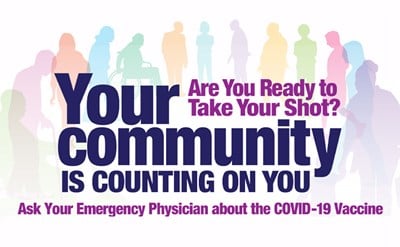WASHINGTON, D.C.—As the U.S. Department of Health and Human Services (HHS) compiles a report to Congress on treating opioid use disorder, the American College of Emergency Physicians (ACEP) urges policymakers to consider steps to remove obstacles to appropriate care in the emergency department.
Remove the “X-waiver.” Emergency physicians continue to see strong results when they can utilize buprenorphine as part of medication-assisted treatment (MAT) to start patients on the path toward recovery from opioid use disorder. Initiating MAT in the emergency department closes gaps in treatment and helps individuals stay in treatment longer, reduces illicit opioid use and infectious disease transmission, and decreases overdose deaths.
The waiver requires completion of an eight-hour course and license application, and it can take 60 to 90 days for physicians to receive the waiver from the U.S. Drug Enforcement Administration (DEA). The waiver requirement has also resulted in a misperception that buprenorphine is fundamentally different from other medications—including narcotics—that physicians are trained to prescribe. As a result, some physicians have been less willing to pursue the waiver or engage in treatment of patients with opioid use disorder at all. In some cases, there is not an adequate supply of buprenorphine in the emergency department or hospital pharmacy because of the confusion surrounding the X-waiver. ACEP believes Congress should take action to remove the X-waiver.
Modify the “three-day rule.” This federal regulation requires administration of buprenorphine one day at a time and requires patients to return to the emergency department or other care setting to receive treatment. Emergency departments should be able to dispense a three-day supply of buprenorphine or administer a dose that will last three days.
Remove pre-authorization requirements. In most states there is a pre-authorization approval requirement by insurers to prescribe buprenorphine. It is estimated that only 25 percent of emergency patients visit during typical office hours. Some states have removed prior authorization for buprenorphine for patients on Medicaid, but the requirement persists in most states for most insurers.
ACEP also supports steps to improve prescription drug monitoring program reporting so that fragmented state-level prescribing data can be meaningfully reported at the federal level.
ACEP and its members would welcome a chance to work with HHS and others to improve and expand education about pain management and addiction treatment, including the benefits of MAT and an effort to correct misperceptions about treating opioid use disorder.
 American College of Emergency Physicians
American College of Emergency Physicians







